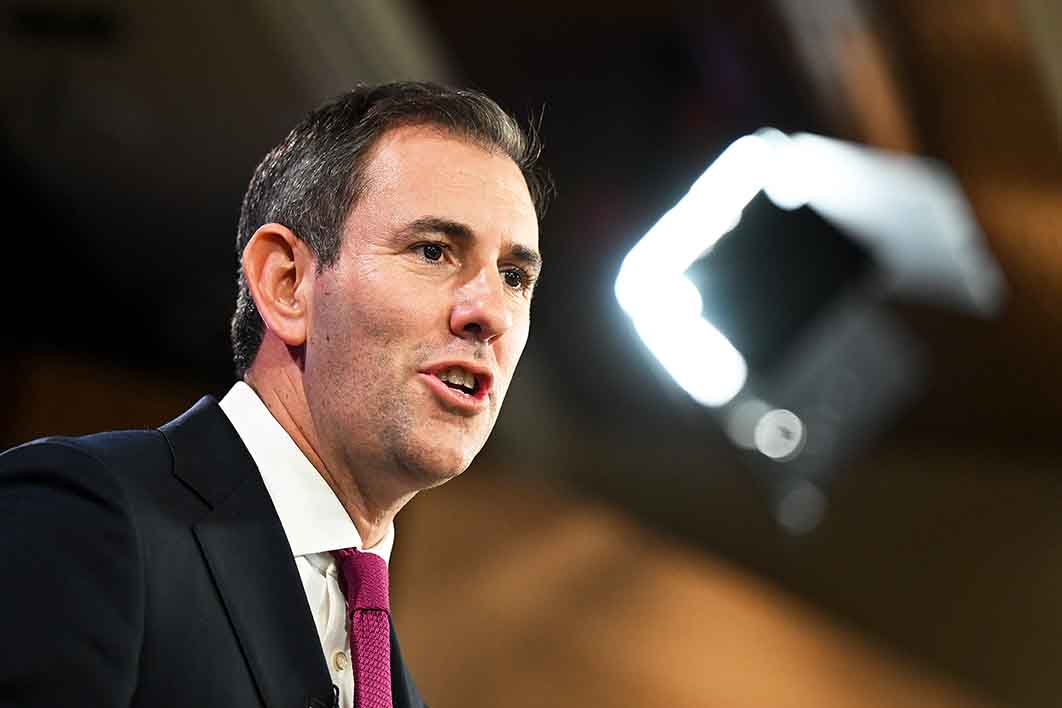“It is difficult to make predictions, especially about the future.” This aphorism, apparently of Danish origin and sometimes attributed to the physicist Niels Bohr, is certainly applicable to the Intergenerational Reports produced by the Australian government since 2002. Plenty of the reports’ predictions have proved wrong and lots of big issues have been missed. Most obviously, thanks to higher migration, the population has grown much faster than was expected twenty years ago.
There is, however, one prediction that can be made, with almost perfect safety. For the foreseeable future, Australia’s political class will continue to worry about declining birth rates and “population ageing.”
Worries of this kind have been around since the late nineteenth century, when families first began exercising some control over the number of children they had. The panic over declining fertility was briefly interrupted by an unexpected baby boom after 1945, which coincided with an economic boom. But concerns about ageing resumed with increasing force from the 1980s, when the fact that baby boomers would one day retire started to enter budget calculations just as the prospects of continued strong growth were fading. Worse, unlike previous generations, the boomers showed a propensity to live well beyond the official pension age.
This resurgence in concern has coincided almost exactly with my own working life, and I have spent a fair bit of that time trying to debunk it. My attempts began before the first Intergenerational Report in 2002, and have continued, with very limited success, right up to last month’s release of the latest.
Criticising alarmism about fertility and ageing is something of a family tradition. In 1988, my mother Pat, a demographer, produced No Rising Generation: Women & Fertility in Late Nineteenth Century Australia, a study of the first panic about declining fertility. The title, a quotation from a typically gloomy pro-natal advocate, would work perfectly well as a summary of views being stated today.
Alarm is expressed most commonly in terms of the “old-age dependency ratio”: the ratio of people aged sixty-five and over, assumed to be dependent, and those between fifteen and sixty-four, who must therefore work to support them.
The ages built into the ratio reflected the economic realities of 1909 (at least for men), when the age pension was first introduced. Most men left school and entered the workforce at fifteen, possibly after a brief apprenticeship. Young and strong, they reached their peak earning power in their twenties. If they made it to the pension age of sixty-five they were worn out and, in many cases, incapable of working any longer. At that point, they could expect to live another ten years or so.
Women, meanwhile, were expected to leave paid employment when they married, as nearly all of them did. They then undertook the work of caring for children — an activity ignored by the dependency ratio and left out of calculations of national income. Reflecting their limited employment opportunities, women could (if single or widowed) receive the age pension at sixty.
Apart from some fluctuations, these patterns didn’t change much for the next fifty years or so. The birth rate fell sharply during the Great Depression but rebounded in the baby boom. Women entered the workforce in large numbers during the second world war but were pushed out again to make room for returned servicemen. And although reductions in premature deaths (especially infant mortality) produced a big increase in average life expectancy, prospective longevity barely changed for sixty-five-year-olds between 1900 and 1960.
After 1960, though, things changed radically at both ends of the age distribution. Leaving school at fifteen ceased to be a sensible (or even a feasible) option. By the late twentieth century nearly all young people finished high school and most went on to post-school education and training. Dependence on parents, and on publicly provided or subsidised education, continued to around twenty years of age.
At the other end of the age distribution, the number of healthy years someone could expect to live after sixty-five increased steadily. The abolition of official retirement ages meant people could choose to work until they were seventy or even older. Yet the trend of the late twentieth century — exacerbated when the 1990s recession consigned many older workers to apparent unemployability — was towards earlier retirement.
It was in this context that Coalition treasurer Peter Costello launched the first Intergenerational Report. Its predictions (or projections) were less important than the rhetorical purpose: to spread the message that reductions in public spending, and particularly in welfare payments, were urgently needed if unacceptable increases in taxation were to be avoided.
These claims were repeated in successive reports, reaching the height of absurdity under treasurer Joe Hockey, who warned that the 2015 report would make us “fall off our chairs” and raised the prospect of newborn Australians living to 150. (He forgot to mention that these future Methuselahs would not even reach pension age until the last decades of the twenty-first century.)
The alarmist tone of the Intergenerational Reports was based on the idea that old people will represent an unsustainable burden on both the health system and the retirement income system. But most of the policy changes necessary to fix retirement incomes were well under way by the time the first report came out.
First, income and assets tests for the age pension, largely abolished in the 1970s, had been reintroduced in the 1980s. Then, beginning in the early 1990s, defined benefit superannuation schemes were replaced by accumulation schemes that put the burden on workers to plan the retirement investments on which they would live.
The final step, beginning in the late 1990s, was a gradual increase in the age of eligibility for retirement incomes of all kinds. The pension age for women was increased to sixty-five. Further changes in 2009 began the process of increasing the pension age to sixty-seven, which has just been completed.
Ironically, the most important backward steps in this process were taken by Costello himself. His tax concessions for superannuation, of particular benefit to self-managed superannuation funds, have proved both unsustainable and politically hard to undo. It has taken fifteen years of effort by governments of both parties to wind them back. The absurdly generous franking credits system, against which Labor campaigned in 2019, now looks untouchable.
The resolution of the retirement income problem was finally acknowledged, with some justifiable partisan spin, in the 2023 report. As treasurer Jim Chalmers observed, “Our population is ageing but our spending on the age pension will fall — that’s the intergenerational genius of super. Super is delivering on its promise — providing a better retirement for more Australians and a better outcome for the budget over the next forty years.”
Despite this, the 2023 report sticks with the outdated dependency ratio, noting that the term “refers to the number of people aged sixty-five and over for every 100 people of traditional working age (fifteen to sixty-four).” The only concession to twenty-first-century reality is the word “traditional,” hinting that a document supposedly designed to prepare for the future is still using the mental categories of the past.
But if we use a more realistic age distribution, and take account of the fact that both young and old people are dependent, the apparent crisis vanishes. There are currently about two people aged under twenty or over seventy for every three people in between. This ratio will barely change between now and 2063.
And what about the old bugbear of health spending? Ever since the first Intergenerational Report, critics of the conventional wisdom have pointed out that the growth in health expenditure has been driven mainly by the new and better treatments that lead to longer and healthier lives. This is the reverse of the alarmist claim that an increase in longevity (the cause of which is left unstated) means longer periods of late-life illness and greater demand for medical services.
New medical technologies are part of the process of structural change inherent in modernity. In the first half of the twentieth century, manufacturing displaced agriculture as the central focus of economic activity, only to be displaced in its turn by services. Now change is occurring within the service sector, with information technology and artificial intelligence replacing some services and enhancing the importance of others.
Much of the growth in the service sector comes from human services like health and education, which governments are best placed to provide or at least fund. This will indeed require an increase in the share of national income going to government, and therefore an increase in tax rates. Rather than calling for alarm, the Intergenerational Report ought to be raising awareness of the need for these structural changes.
Like its predecessors, the latest Intergenerational Report will almost certainly fail to create the hoped-for sense of alarm among voters. But in two crucial respects it ought to be generating some alarm in the political class that produced it.
First, the report spells out the need for more tax revenue. Yet the major parties have a bipartisan commitment to cutting taxes for those with the greatest ability to pay. The stage three tax cuts, designed by Scott Morrison first as treasurer and then as prime minister, will put a hole in tax revenue that will take decades to fill. And Labor’s 2019 election defeat led it to abandon most proposals to close tax loopholes.
Our government ought to be even more alarmed about global heating. For the first time, this year’s Intergenerational Report at least attempts to estimate some of the monetary costs of the disaster towards which we are accelerating. But the government that commissioned it is doing little to improve the situation, and a great deal to make it worse.
Every day, it seems, we read of a new coalmine being approved or a new gas project receiving massive subsidies. And every day the results are evident around the world in catastrophic fires, devastating floods and the accelerating destruction of natural habitats.
We are, indeed, driving younger generations of Australians towards a poorer future. But this poverty won’t be caused by higher tax rates or the costs of aged care. Rather, our poisoned bequest will be the unliveable planet that is already in plain view. •




